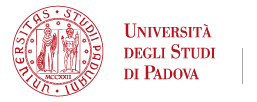

MARTA GIACOMELLO
Title: Professore associato
SSD: BIO/10 - Biochemistry
Address: VIA U. BASSI, 58/B - PADOVA
Phone: 0498276300
E-mail: marta.giacomello@unipd.it
Curriculum
My career path is characterized by 3 intertwined fields of interest: i) cell signalling; ii) organelle biology and function; iii) development of genetically encoded probes. During my PhD in Prof. Paola Pizzo’s lab. I demonstrated that Ca2+ dyshomeostasis is an early hallmark of Alzheimer’s Disease (AD; Giacomello et al, Neurobiol Dis, 2005), thus paving the way for hypothesis that disrupted organelles communication underlyies this pathology (Area-Gomez, 2013). Throughout my post-doctoral trainings in the lab of Prof. Bruno Cozzi and Ernesto Carafoli I studied the signalling pathways underlying Huntington’s Disease (Costa et al, EMBO Mol Med 2010), Malignant hyperthermia (Canato et al, PNAS 2010) and hereditary deafness (Giacomello et al, Cell Calcium 2011; Giacomello et al, Int J Biochem Cell Biol 2013). In 2005 I increased my expertise in i) and iii) in the lab of R.Y. Tsien (UCSD, San Diego; 2008 Nobel prize in Chemistry) where I contributed to the generation of new Ca2+ indicators (Palmer et al, Chem Biol 2006); once back to Padova, in the lab of prof. Tullio Pozzan, I capitalized on this experience to demonstrate the existence of Ca2+ microdomains on the surface of mitochondria (Giacomello et al, Mol Cell 2010). This work, together with that of Hajnoczky’s group (Cordas et al, Mol Cell 2010), represents a milestone in the field of inter-organelles communication. In 2012 I pursued my interest in the latter topic by joining the lab of L. Scorrano (CMU, Geneve) where I developed and performed a High content, genome wide, screen to identify the proteins that modulate mitochondria-ER tethering (yet unpublished). In 2016 I joined the Dept of Biology, Univ. of Padova, as Assistant Professor of Biochemistry (RTDa in the Italian rank, RTDb since december 2019) and since then my laboratory has been interested in the pathophysiological consequences of mitochondria-ER contacts changes in pathophysiological models (Giacomello et al Cell Deaf Differ.2016; De Mario et al, Biochem Biophys Res Commun 2017; Sala-Vila et al, Sci Rep 2016; Ilacqua et al, Front Cell Dev Biol. 2017; Larrea et al, Hum Mol Gen, 2019).
Research area
Biochemistry
Cell biology
Molecular mechanisms underlying human diseases
Proposals for thesis
Thesis 1) Characterization of proteins involved in the contact sites between mitochondria and melanosomes.
Thesis 2) Molecular mechanisms underlying melanogenesis.
Thesis 3) Role of AIFM3 in ciliogenesis.
Last update: 13/11/2025





